Pest Library
Home - Pest Library

Cockroaches
Just about everyone knows what a cockroach looks like; they are everywhere. While it is often jokingly stated that if anything could survive a nuclear war, it would be a cockroach, the idea is clear - they are real survivors.
Once there is a cockroach infestation, it can be very hard to get rid of them. Cockroaches multiply very quickly, and they also adapt quickly, too. It is important to contact a pest control agency quickly if you see them in your home or business.
There are over 4,000 different varieties of cockroaches, but only about thirty of them can comfortably live with humans. This number can be further reduced to include only four varieties; the main species that cause problems in homes and businesses in America.
The four main species are the American, German, Asian, and Oriental cockroaches. These vary in size from about 1/2" (German), up to 2" (American). In America, the species that is most common in homes would most likely be the German variety.
Cockroaches increase in population at a very rapid rate. The German cockroach female lives about 200 days. Each egg case that she lays includes thirty to fifty eggs. In her lifetime, she will produce between four to six egg cases. German cockroaches are clearly able to thrive.
Once cockroaches infest a home, they are rarely seen. Cockroaches are nocturnal and can live up to a month with little or no food. They can also survive by eating book bindings, furniture, glue, soap, dead insects, shoe linings, and more.
The presence of cockroaches can lead to a definite impression of uncleanness- especially if your guests see them. Contrary to popular belief, a cockroach infestation is not necessarily an indication of poor hygiene. However, an untidy environment will make it all the more difficult to get rid of them. The presence of cockroaches can also lead to health problems, including asthma in children. If you spot a cockroach at home or work, there are likely more of them concealed nearby. Contact a pest professional to avoid letting an infestation get out of hand.

Ants
Ant infestation is the most commonly reported pest problem. These tiny scavengers will enter your home or business looking for moisture and an accessible food source. Rotting or damp wood that is moldy can attract ants. Ants also feed on sugar, cheese, meats, vegetables, grease, peanut butter, and dead insects.
Ants often enter a home through cracks around windows or doors, but they can find numerous entrances to your home or building. Once inside, the growing ant colony can become a problem quickly, as ants mature from juveniles to adults within a matter of days.
It is necessary to properly identify the ant species that you have in order to effectively eradicate them. Of the thousands of species of ants, the four listed below are the most commonly found in the United States.
Carpenter Ants: are about five eighths inches long. They tend to burrow in damp wood but have also been known to damage solid wood. They do not eat the wood, but simply remove it in order to build a nest.
Red Imported Fire Ants: vary in size from one-eighth to three-eighths inches. They construct large mounds for nests and administer painful stings.
Pavement Ants: are about one-eighth inch long. They generally make their nests in pavement cracks and are also capable of infesting a building.
Pharoah Ants: are about one-sixteenth inch long. These ants are commonly found in hospitals and nursing homes, where they are are capable of transmitting Staphylecoccus and Psuedomonas infections. Pharoah Ants also invade restaurants, apartment buildings and similar dwellings.
Ants with wings can easily be mistaken for termites, which may lead to a wrong treatment. In comparison, ants have a very narrow thorax (mid-section), while termites' bodies are more uniform.
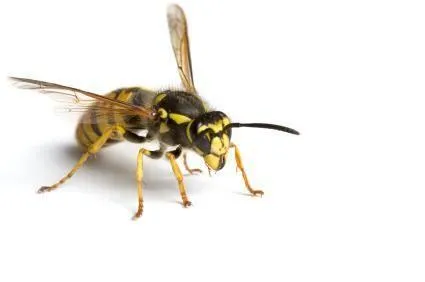
Bees & Wasps
A bee or wasp problem in or your home or yard can disrupt daily life and put both you and your family in danger. If a family member is allergic to a bee and is stung, the reaction might be serious enough to warrant a trip to the hospital. A bad reaction can occur even if the allergy had previously been non-existent or mild. Also, an individual's allergy can worsen after repeated exposure to bites. Multiple bites can be quite dangerous, especially with regard to the elderly or small children. Regardless, bee stings hurt even without an adverse reaction. If you want to make sure that bee or wasp stings do not pose a danger to you or your family, let a professional exterminator address the problem.
Exterminating bees or wasps on your own can be difficult and even dangerous. Sometimes a homeowner will attempt to exterminate pests alone, using chemical sprays from a hardware store or supply center. If these sprays are not applied in the correct locations, most of the bee or wasp colony will survive. The most challenging nests to control are those that located deep inside the walls of a home or in the attic. Often, a homeowner does not even know where the actual colony is located. He or she only sees where the wasps are flying back and forth through a crack or hole in the home. If there are bees or wasps anywhere in your home, extreme caution is advised. A professional exterminator will know exactly where to spray in order to eliminate your bee or wasp problem for good.
Outdoors, bee and wasp nests near human activity can pose a potential problem. Some wasps may become aggressive scavengers around human food and are attracted to outdoor activities where food or drinks are served. Most bees and wasps will not attack if left alone. However, some people are curious to observe a nest or unknowingly surprise a member of a hive. If provoked, a bee will sting in defense of its nest or itself. Insect sprays should be used with caution. Some of the more caustic over-the-counter sprays on the market can cause harm to children and pets. A professional exterminator knows which sprays to use that will not harm any of your loved ones.
If you attempt to exterminate pests yourself, you could literally spend hours shopping for costly pest control sprays or trapping devices. You could then spend even more time trying unsuccessfully to kill the wasps or bees, putting yourself or your family at risk in the process. A professional exterminating service can take care of your pest problem efficiently. Exterminators train or apprentice before they begin working independently and know a great deal about insects and insect removal. Contacting a professional exterminator can save you both time and money. The sooner you call a licensed exterminator, the sooner your family's home and lives can return to normal.
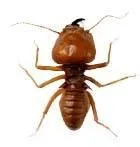
Termites
Subterranean termites are the most common and destructive termite in the U.S. Interestingly, they are found in every state except Alaska.
Subterranean, by definition, means "situated or operating beneath the earth's surface; underground." These insects make their home (a nest or colony) primarily in the soil or wood beneath the soil. They tunnel through the ground, searching for trees, brush and other decaying wood (preferred) found in nature. If this primary source is reduced or absent, termites look to other food sources, namely, your home.
Termites easily access a home through any wood in contact with the soil. As a result, nearly every termite prevention list advises storing firewood several feet from the house and keeping the surrounding grounds clear of other wood debris. Regular inspections by pest control companies are highly recommended. A pest control technician can save a homeowner thousands of dollars in home repair bills by conducting routine professional inspections on a regular basis.
Termites are insects with a very defined social strata. A mature termite colony may number in the millions, with each member fulfilling a defined biological role. The castes, not including nymphs (immature termites), are called workers, soldiers and reproductives. Typically, a queen and king reside in a mature colony. Winged adults are referred to as "swarmers." They emerge from the colony and take flight (swarm) during certain seasons of the year, usually late winter to early spring. This marks the beginning of the termite reproductive cycle, as the swarmers are the primary reproductives. Swarming is also significant, as it is during this time that they are most likely to be spotted by humans.
People often confuse swarming termites with flying ants. There are distinctive differences, however. In order to discern a termite from a winged ant, compare the visual biological differences:
Ants have a narrow, wasp-like waist (more "cinched" in the middle of the body). Termites do not have a defined waist.
Ant wings are about equal to the body size, with the fore and hind wings of unequal length. Termites have four wings of equal length that are nearly twice as long as their bodies.
Ant antennae are L-shaped, with a "bend," while termite antennae are straight.
Leading indicators of a termite infestation of the home are scattered, discarded wings on floors and window sills. Other visual evidence is their earth-colored mud tubes (protective tunnels constructed by termites for travel), which are often found in damp basement corners, walls, wooden support beams, posts, doors and window trim. The extensive structural damage termites inflict may go largely unnoticed for lengthy periods of time, as the infested building appears structurally sound from the outside. If you suspect an infestation or wish to take preventative measures as a homeowner, contact a pest control company to conduct a professional inspection.
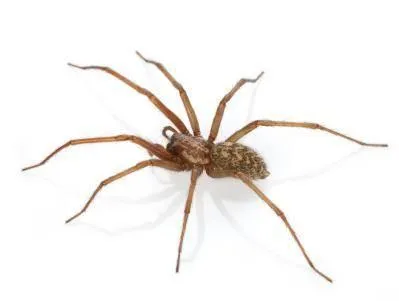
Spiders
Spiders are generally good to have around, as they help minimize the population of harmful insects. The problem arises, however, when they negatively affect humans. The mere sight of a spider can be a real scare for some people. Aside from that, many spiders do bite humans and are poisonous, so it is a good idea to have a pest control company address your spider infestation.
Several spiders pose a serious threat to humans. The two that are the deadliest to humans in the United States are the Black Widow and the Brown Recluse. Since a few people die each year from the bite of either of these two spiders, it's extremely important for any person who is bitten by one of these spiders to seek treatment immediately. In some cases, hospitalization may be necessary.
The Black Widow spider can be easily recognized because she is black with a red hourglass on the underside of her abdomen. The male is considerably smaller than the female, and he has a body up to half an inch long. The Black Widow typically remains outdoors.
The Brown Recluse spider has a darker brown hourglass on its back. The Brown Recluse loves to be indoors and generally stays out of sight. It may never be seen until you startle it by reaching into a dark spot where it is hiding. Then it will bite.
There are plenty of other spiders in the United States, such as the Grass Spider, Wolf Spider, Hobo Spider, and the Saint Andrew's Cross Spider, just to name a few. These spiders do not have the same strong venom in their bite, but all are painful and treatment may be required.
If you have noticed spiders in your home, contact a pest management company. They will know the most effective, safest way to eliminate the spider problem, and make recommendations about keeping them away in the future.
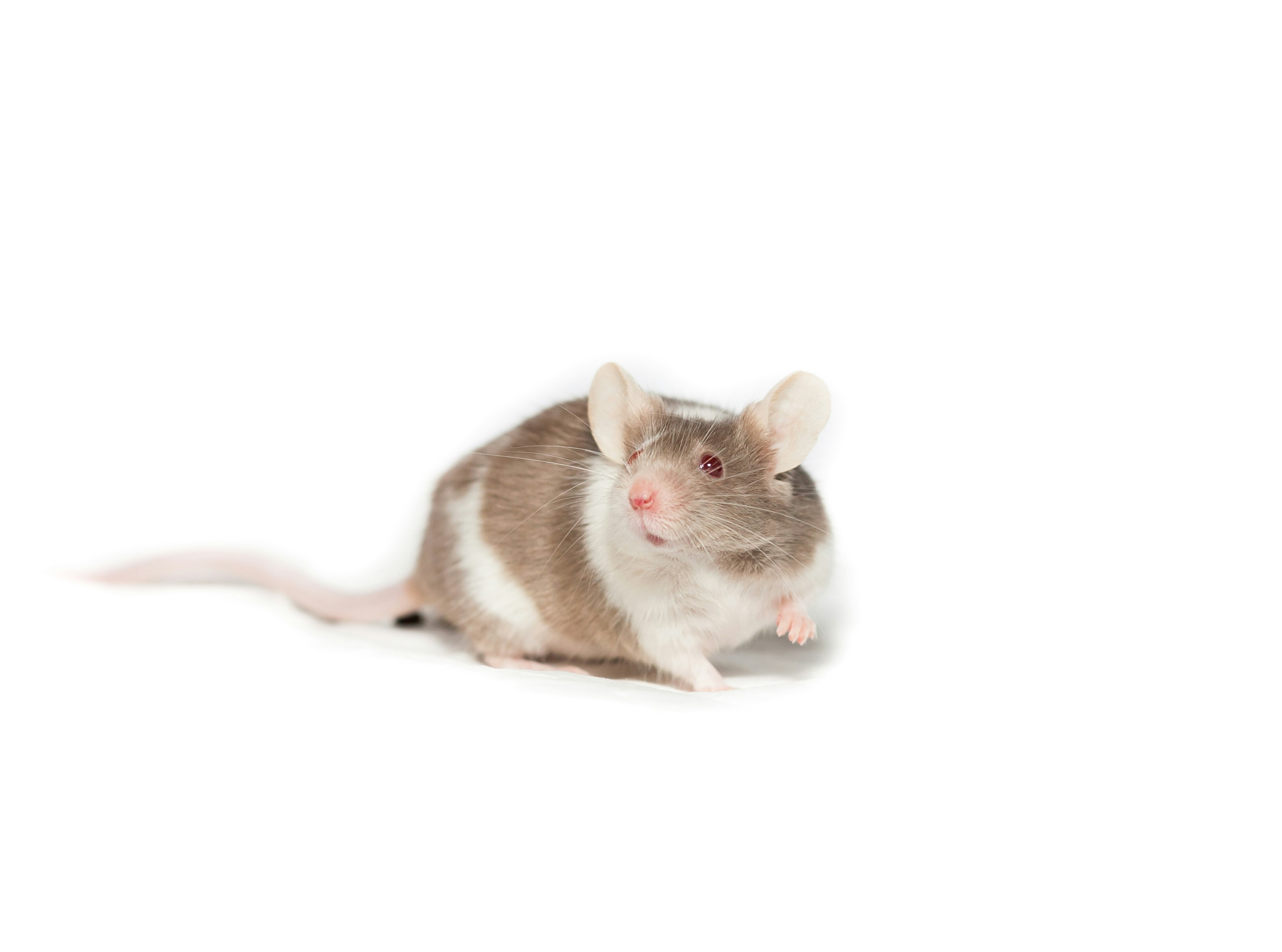
Rodents
Mice and rats are a problem when they find their way into your home. They like to be near humans so that they have a ready supply of food. This has earned them the term "commensal," which means "to share one's table."
The class of creatures called "rodents" actually encompasses a much more than just mice and rats. It refers to any animal whose incisor teeth continue to grow, so they must continually gnaw in order to keep them serviceable.
There are more than 2,200 different rodents. Together they make up more than 40% of all mammals. In this group you will find: mice, rats, squirrels, capybaras, nutria, chipmunks, prairie dogs, and many more.
Removing rodents can sometimes be as easy as setting a mouse trap; but a larger infestation (especially with rats or larger rodents) can be larger issue. Rats, especially, are smart and can learn to avoid traps.
Rodents can carry up to thirty-five diseases that humans are susceptible to, which is another reason to eliminate them as soon as possible. Cleaning up after a rodent infestation also requires a great deal of caution. This is necessary because of the possibility of fleas or mosquitoes, which may transmit their own diseases to you, your children and pets. There is also risk involved if you inadvertently stir up the dust of their nests; it can be hazardous to breathe in the bacteria contained within.
Rodents can also do physical damage your home or business. They easily chew through some types of siding and other building materials. They are also known to chew on electrical lines, thereby increasing the possibility of fire. They damage other materials as well, creating holes and gnawing on numerous objects, especially food or food containers.
Removing rodents can be difficult. A professional pest management company will identify nesting areas and feeding grounds and know how to completely eliminate them. Proper cleanup is also performed, ensuring that you and your family are safe from allergies, illness and possible future infestation.
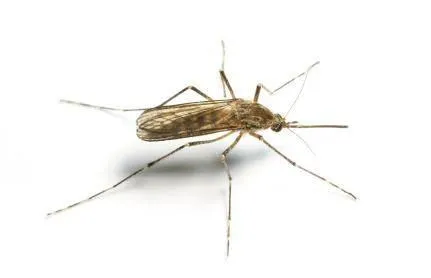
Mosquitos
Nearly everyone is affected by mosquitoes during the warmer months of the year. These pests swarm at outdoor events and breed prolifically in stagnant water--from bird baths to discarded tires--even puddles from the latest rainfall. Certain land features, such as swamps, reservoirs and retention ponds are virtual breeding grounds for mosquitoes. And, all it takes is one tenacious pest to infiltrate your home and make everyone inside miserable.
Contrary to popular belief, mosquitoes do not require blood to live, as they actually feed on nectar. The males are not blood drinkers; however, the female of the species requires it in order to lay eggs. Once she lays her eggs, a female mosquito will seek more blood in order to produce more young. She will continue this cycle during her short life span of about two weeks.
Though some may consider them an unpleasant nuisance, mosquitoes are responsible for more human deaths than any other insect. Mosquitoes feed off both humans and animals, thereby easily infecting host upon host.
A single mosquito bite can transmit diseases such as malaria, dengue fever, and encephalitis. The well-known and well-publicized West Nile Virus (an Encephalitis virus) first appeared in the Western hemisphere in 1999 and quickly spread to infect people in every state in the US.
As a result, mosquito control is vitally important to human health and well-being. There are many varieties of mosquitoes, some of which carry more deadly diseases than others. Mosquito insecticide is often used on a wide-scale basis to combat mosquitoes and is generally very effective. If your property is prone to attracting and breeding a mosquito population, contact a professional pest control company to assess and manage the situation.
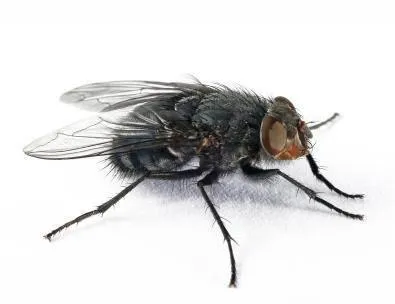
Flies
Flies, typically considered a nuisance, exist in all regions of the United States. There are more than 240,000 different species of flies in the world. Approximately one third of them, including mosquitoes and gnats, can be found in the United States.
A true fly has only one set of wings. All flies are known disease carriers, many of which can be transmitted to humans. Flies typically breed in garbage, excrement of animals and humans, sewers, compost piles, and any other place where matter is decaying. This enables them to pick up various kinds of diseases which can be transmitted to people by biting or by landing on food, where the bacteria and viruses are released. Since flies are able to transmit disease so easily, it is necessary to seek insect control quickly. The diseases that they can carry include malaria, yellow fever, encephalitis, dengue fever, and more.
All flies have a rapid rate of growth and go from egg to adult in about seven days. Maggots are just one stage in the early development of a fly. Maggots of some fly varieties, such as the Carrot Rust fly, can be a problem because they eat the roots of some vegetables. The most common flies are the Fruit fly, the House fly (which have four stripes on their abdomen), the Cluster fly (which is dark gray in color), and the Garbage fly (which has a metallic color that is either green or blue). Another kind of fly, the Stable fly, typically exists around livestock. The Horse fly and a few other varieties of flies actually have mouth parts and can bite humans. Most other flies have a sponge-like mouth and can only drink up their food.
One benefit of flies is that they help reduce the population of other pests. They also help to break down carcasses and other decaying matter faster by preparing it to reenter the ground. Properly controlling flies includes not only killing the adults, but also destroying their eggs and larvae. Call a pest professional to manage any fly problems you encounter.
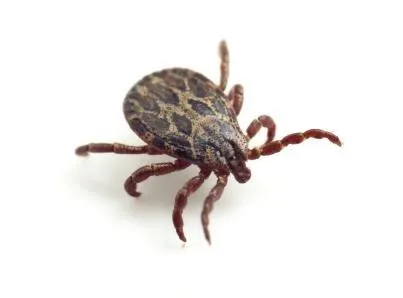
Ticks
Ticks can be found year-round but are most prevalent in the warm summer months. They are parasites, and as a result, are on a continual quest for a host. If a host is not available, a tick can survive up to a year without feeding.
A female tick must have a blood meal before she can lay eggs. After feeding, she drops off her host and lays thousands of eggs. A female tick lays one batch of eggs, after which she dies. A male tick also dies after reproducing.
There are two established families of ticks: hard ticks and soft. A tick matures from egg to adult in stages. Depending on the family, some reach maturity in only a few stages of growth. Other varieties may take as many as eight stages to develop. The length of time to reach maturity also depends on factors as temperature, humidity and availability of food. With regard to physical characteristics, an immature tick has six legs; a full-grown adult has eight.
Ticks transmit a number of diseases as a result of feeding off both human and animal hosts. Examples include Rocky Mountain Spotted Fever, Lyme Disease, Q Fever, Tularemia, Tick Paralysis and Meningoencephalitis.
Ticks often prefer certain hosts over others, resulting in names as Deer Tick, Cat Tick, American Dog Tick, Bat Tick, Bird Tick, etc. The family pet is a popluar carrier of ticks, which unfortunately results in a tick entering a home. After feeding for a few days, a female tick will drop off of her host to lay eggs. Ticks seek out tiny crevices in which to store their eggs, which can result in a full-blown infestation of your home. Attempting to rid your home of the tick infestation can be difficult and frustrating, as eggs can hatch months later, long after you think you have the situation under control. For the best results in combating an tick infestation, contact a professional pest control company.
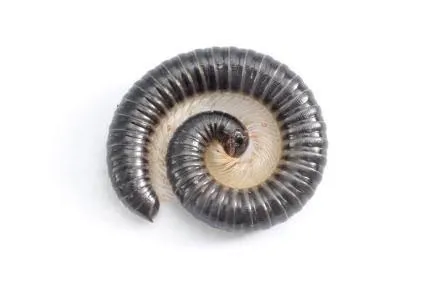
Centipedes
Millipedes and centipedes are similar pests. Though they may be unusually repulsive, they are not a major threat to people or animals.
Centipedes in the south tend to be the largest. They can grow up to six inches in length. A centipede can be easily distinguished from a millipede because it has fewer legs; specifically, one set for every segment of its body. Millipedes have two sets of legs for every segment, and when they move, their legs appear to be moving in a wave-like motion. A millipede's legs are also shorter and, in general, a millipede cannot move very fast. A centipede, with its fewer legs, can travel considerably faster.
Both centipedes and millipedes are generally hatched from eggs, but some varieties are born live. Some centipedes may live as long as six years.
Centipedes actually have the ability to bite, and are poisonous. The poison from their fangs, located behind the head, is used to kill insects, which are their primary food. To a human, a bite feels like that of a bee sting, and can be dangerous,especially if there is an allergic reaction in response to the bite. Children will be more sensitive to a centipede's bite.
Millipedes are not poisonous and do not have fangs, but they can emit an obnoxious fluid to defend themselves. Some varieties can spray this fluid several inches. The fluid can cause irritation to the skin in some people and should be removed right away. Additionally, it may take some scrubbing to get rid of the odor.
Millipedes feed on decaying plant matter and sometimes living plant roots. Millipedes can damage those roots if there are too many of the pests in the soil. Some varieties are known to be especially bothersome to greenhouse plants. If this occurs, you may need to contact a pest control agency to eliminate your millipede infestation.
House centipedes are an indoor variety. They can move quickly and do not require the moisture that the other varieties need. Centipedes are beneficial to the control of other insects, which may be a good reason to keep them around. The most likely time of year to see centipedes in your home is in the spring or fall.
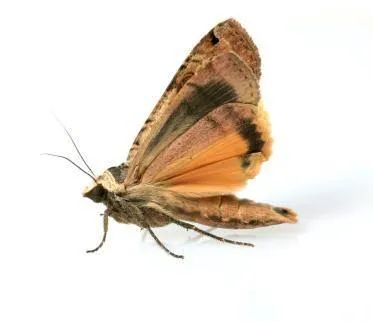
Moths
By the time you notice moths in your home, they have usually already found something they like to eat. Fortunately, their feeding choices are rather limited, and you can usually find where they are feeding rather quickly.
Moths that are found in the home are generally one of two basic kinds; either a food-eating moth or a fabric-eating moth. A food-eating moth, which is the most common, will most likely be found in your pantry. A fabric-eating moth will most likely be found in your closet.
Food-eating moths come in a variety of types, but are usually frequenting your pantry or kitchen cabinets, pet food, or garbage can. They especially like to eat grains, cereals, flour, pastas, powdered milk, bird seed, and other similar foods. These foods are less likely to attract moths if they are stored in air-tight containers.
Moth eggs are laid in or near these foods. The eggs will develop into larvae, which will start eating the food. In their immature stages, you are unlikely to see them because they will be close to the same color as the food they are in.
The most common type of food moth is the Indian Meal Moth, which is also sometimes referred to as the North American High-Flyer. It is also the most destructive. The larvae are often referred to as "waxworms."Â These moths are also known as flour moths or pantry moths. A female Indian Meal Moth can lay up to 300 eggs at one time. As adults, they grow to be about half an inch long.
Fabric moths include species like the Webbing Moth and the Casemaking Moth. Both of these moths are only about one fourth of an inch long, and do not like to be seen, and rarely are. Generally, the only way you will know that these moths are present is when you see holes in your fabric.

INITIAL SERVICE
Buy now and get $50 off
your initial yearly pest control service or first quarter free with a yearly pest control service.

WHY LIGHTNING TERMITE & PEST CONTROL?
Our clients receive guaranteed results due to our professional quality assurance policy that forms a solid ground for our high level of efficiency. We strive to work up to our own high standards by improving the tools and technology.
Customer Reviews

AMAZING!
Thank you very much for helping me out with the bug problem in my house. I recommend you to everyone!

Jessica Thompson
Mount Pleasant, SC

GREAT SERVICE
As a businessman, I appreciate the professionally addressed issues that are being handled immediately. Great job, thank you.

Robert Lee
Charleston, SC

GREAT GUYS
I like how quick and effective their service was – exactly what I needed at that moment!

Deborah Jones
Summerville, SC
ENJOY YOUR HOME
TOTALLY PEST-FREE
24/7 Emergency pest control
Certified technicians
3 month guarantee
How Can We Help?
We Provide a Wide Variety of Pest Removal Services
FOR YOUR HOME

Help
Our management staff expertly coordinates
pest control orders to avoid any delays

Protect
There is literally no chance for pests to
survive

Keep Watch
We give you instructions for safety measures
that you can follow at your home
FOR YOUR BUSINESS

Integrated Pest Management
Our management staff expertly coordinates
pest control orders to avoid any delays

Pest Control
There is literally no chance for pests to
survive at your office

Service Documentation
We give you instructions for safety measures
that you must follow at your office
COMPANY STORY
& EXPERIENCE
Living in a comfortable house with no fear for pests is the most natural thing, as well as having a safe working environment which is crucial for your business and for the customers. We strive to reach the best result fast and at minimum risk.













